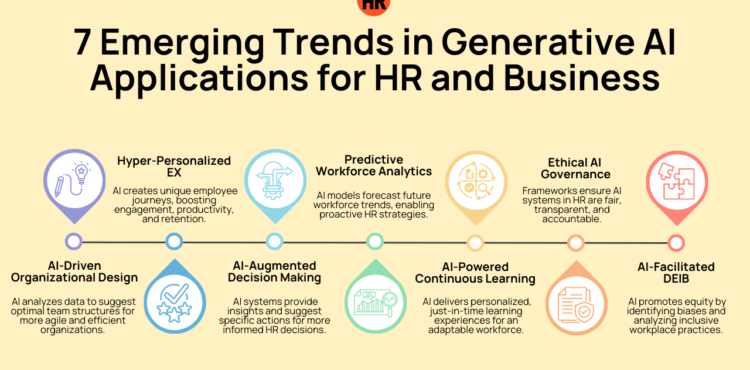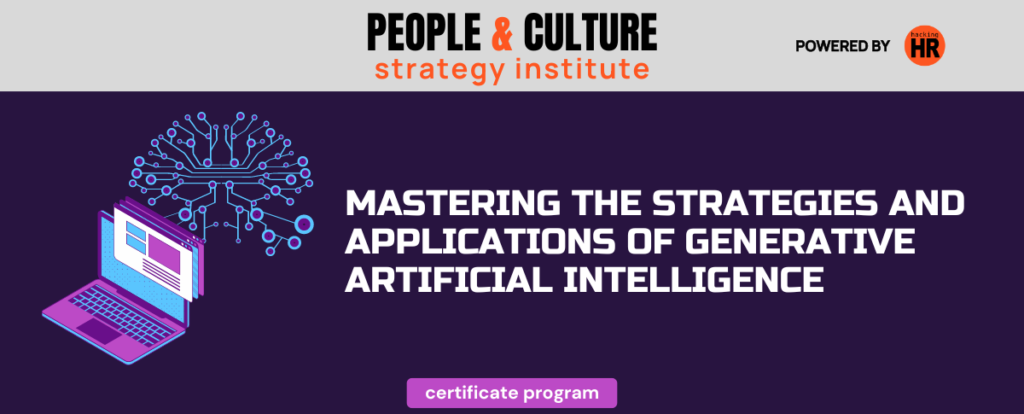
Advanced Techniques and Future Trends in Generative AI: Staying Ahead of the Curve
Generative AI is redefining what’s possible in HR and business operations and creating more and more opportunities as it rapidly advances.
How can business and HR leaders harness the full potential of generative AI to drive innovation and efficiency at work? What emerging trends and advanced techniques should they be aware of to stay competitive in this AI-driven landscape?
The pace of generative AI advancement is breathtaking, with new capabilities and applications emerging almost daily. From multimodal AI that can process and generate content across various formats to quantum-inspired algorithms tackling complex optimization problems, the frontier of AI technology is constantly expanding.

This article explores the latest advancements in generative AI technology, emerging trends in its application for HR and business, and strategies for organizations to stay ahead in this rapidly accelerating field.
As you read, consider how the insights shared here could be applied in your organization and how further education, such as our certificate program “Mastering the Strategies and Applications of Generative Artificial Intelligence,” could help you lead the way in this exciting new era.
5 Cutting-Edge Features of Generative AI Technology
These are some of the cutting-edge features at the forefront of Generative AI technology. These features are powering new possibilities for innovation and problem-solving in HR and beyond:
- Multimodal AI: This advanced feature allows AI models to process and generate content across different modalities, such as text, images, audio, and video simultaneously. Multimodal AI can understand context from various input types and create coherent outputs that combine multiple formats. For HR, this could mean more comprehensive employee communication tools, interactive training materials, or advanced candidate assessment methods that analyze verbal and non-verbal cues.
- Few-shot and zero-shot learning: These capabilities enable AI models to perform tasks with minimal or no specific training examples. Few-shot learning allows models to generalize from a small number of examples, while zero-shot learning can tackle entirely new tasks based on descriptive instructions. This feature could revolutionize HR processes by allowing AI to quickly adapt to new scenarios, such as creating job descriptions for emerging roles or developing training programs for novel skills without extensive data collection.
- Explainable AI (XAI): As AI systems become more complex, the need for transparency in their decision-making processes grows. Explainable AI focuses on making AI models more interpretable and their outputs more understandable to humans. This feature is particularly important in HR contexts where decisions affect people’s careers and livelihoods. XAI can help HR professionals justify AI-assisted decisions in areas like recruitment, performance evaluation, or succession planning, ensuring fairness and building trust in AI systems.
- Federated learning: This approach allows AI models to be trained across multiple decentralized devices or servers holding local data samples, without exchanging them. Federated learning addresses privacy concerns by enabling organizations to collaborate on AI model development without sharing sensitive employee or organizational data. For HR, this could facilitate benchmarking and industry-wide insights while maintaining strict data privacy standards.
- Quantum-inspired algorithms: While true quantum computing is still in development, quantum-inspired algorithms are already enhancing AI capabilities. These algorithms mimic certain aspects of quantum computing to solve complex problems more efficiently than traditional methods. In HR, quantum-inspired algorithms could tackle intricate optimization challenges like workforce scheduling, resource allocation, or complex scenario planning for organizational changes.
7 Emerging Trends in Generative AI Applications for HR and Business
Read more HERE.